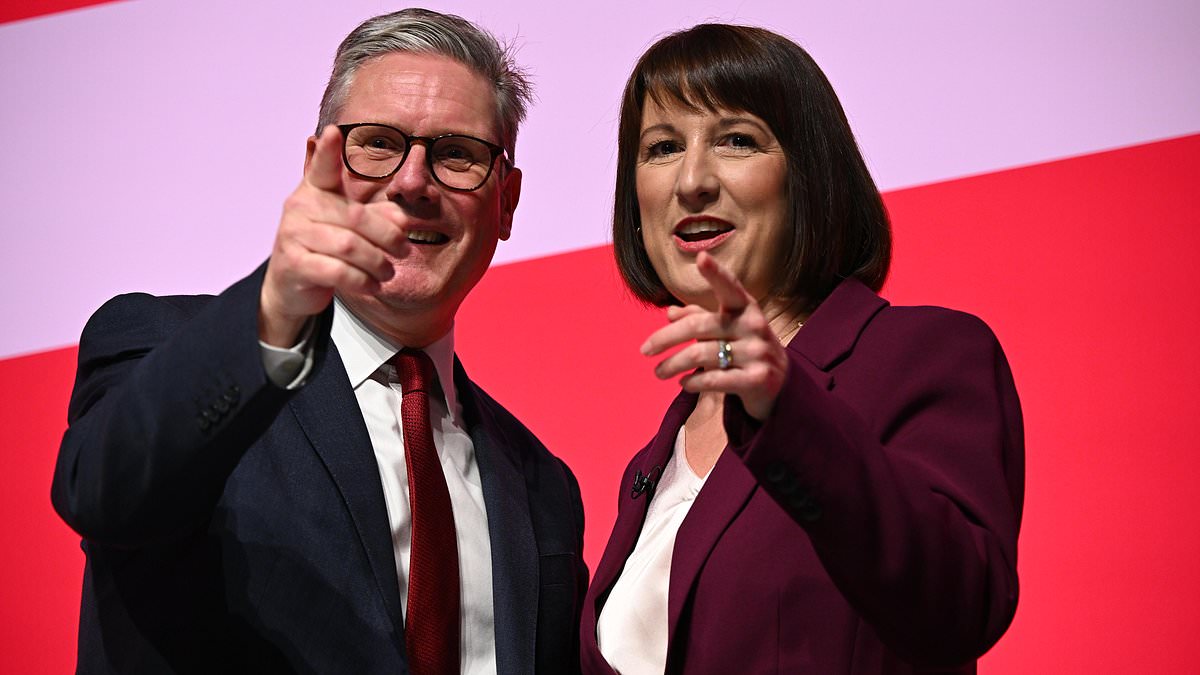Unemployment has risen by more than 200,000 since Labour came to power according to stark official figures that underline the government’s dismal economic record.
The jobless total stood at 1.67 million in the three months to June this year, the highest since the pandemic, according to the Office for National Statistics (ONS).
That was 206,000 higher than the same period a year ago, just before Labour came to office.
The downturn in the jobs market is widely blamed on Rachel Reeves’s £25 billion raid on employer national insurance as well as a sharp rise in the minimum wage and plans to impose a raft of new workers’ rights – all of which are making it costlier to hire people.
Vacancies have also been falling sharply, with the number of roles up for grabs last month down by 145,000 compared with a year ago. The ONS said that ‘some firms may not be recruiting new workers or replacing workers who have left’.
And a separate measure of UK payrolled employees fell by 8,000 in July – the tenth decline in the past 12 months, with the falls concentrated in the hospitality and retail sector.
It means total payroll numbers have fallen by 164,000 over the past year.
The biggest fall in payrolled employees was among 25-34 year olds, down by 106,000 since July 2024.
Tory business spokesman Andrew Griffith said: ‘The data shows young people seeking their first job hit the hardest.
‘Labour’s NI jobs tax and more red tape on employers mean the “deal” of studying hard and getting good grades in the hope of a job is breaking.
‘They don’t understand business and didn’t listen to the warnings.’
Suren Thiru, economics director at the Institute of Chartered Accountants in England and Wales, said: ‘These figures signal growing turmoil in the UK labour market, with April’s leap in employment costs and a flagging economy pushing more businesses to actively cut headcount and cap pay awards.’
Jane Gratton, deputy director of public policy at the British Chambers of Commerce, said: ‘There is a limit to how many additional costs businesses can absorb. It’s crucial that there are no more taxes on business in the forthcoming budget.’
The figures also revealed a slowdown in wage growth from 5 per cent to 4.6 per cent.
Isaac Stell, investment manager at Wealth Club, said that ‘points to growing signs of economic strain and an absence of momentum’.
ONS director of economic statistics Liz McKeown said: ‘Taken together, these latest figures point to a continued cooling of the labour market.’
The figures did nothing to boost Bank of England interest rate cut hopes.
Rate-setters on the Bank’s Monetary Policy Committee (MPC) are split over whether to cut rates further amid signs of economic weakness or leave them on hold to guard against inflation pressures.
With the unemployment rate unchanged on the past month at 4.7 per cent and the latest fall in payroll numbers slightly milder than in previous months, the chance of a September reduction faded further, economists said.
Markets now see the chances of one more cut this year to 3.75 per cent at little better than 50/50.
Matt Swannell, Chief Economic Advisor to the EY ITEM Club, said: ‘Further interest rate cuts should be expected, but the pace remains the big question.
‘No change to interest rates at the MPC’s September meeting looks almost certain, while a skipped cut at the November meeting is a distinct possibility.’
Mr Griffith added: ‘With trade unions calling the shots, every Labour government leaves unemployment higher but Starmer and Reeves have managed to increase the dole queues even faster than usual.
‘Turns out taxing jobs was every bit as stupid as we told Rachel it would be.’
